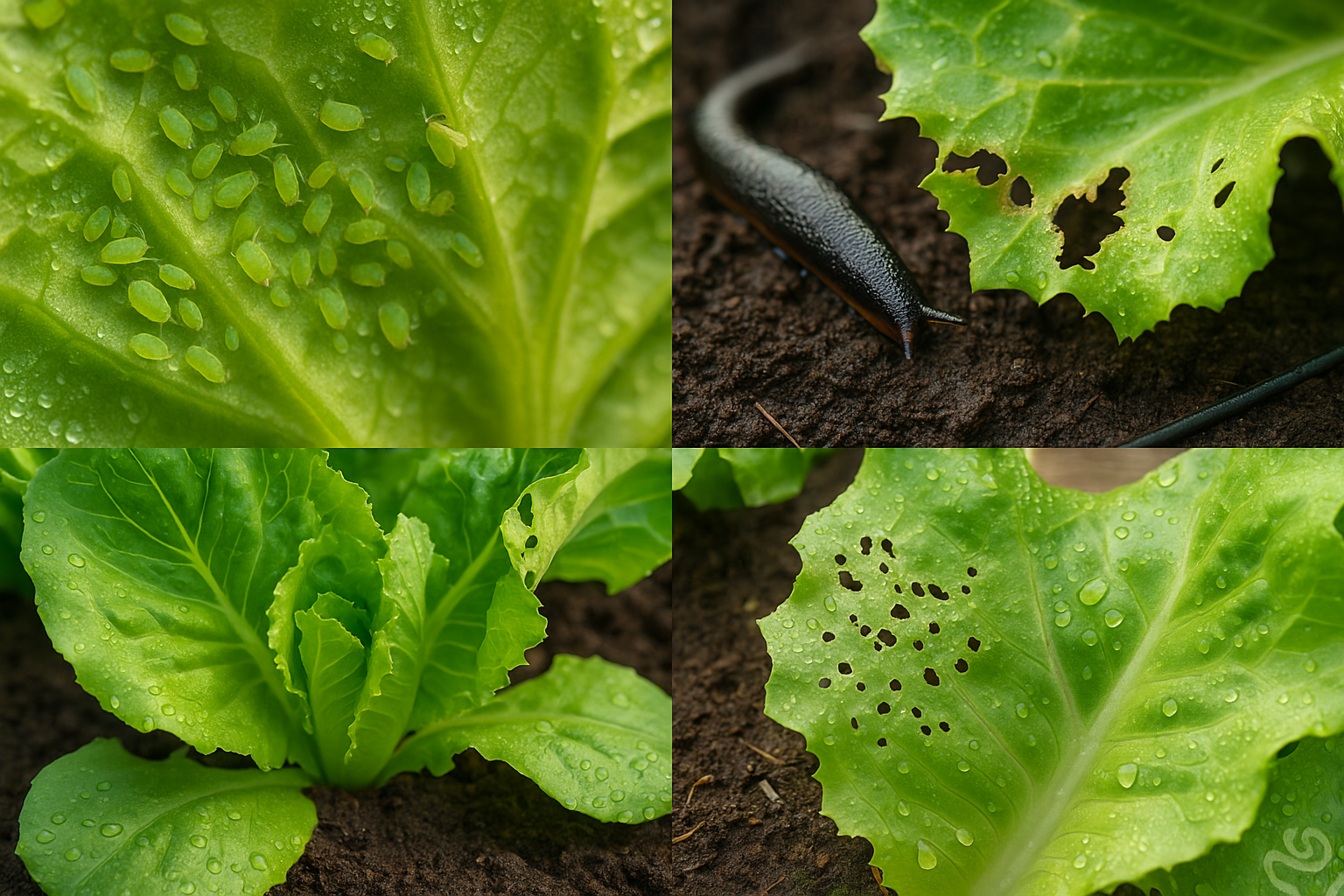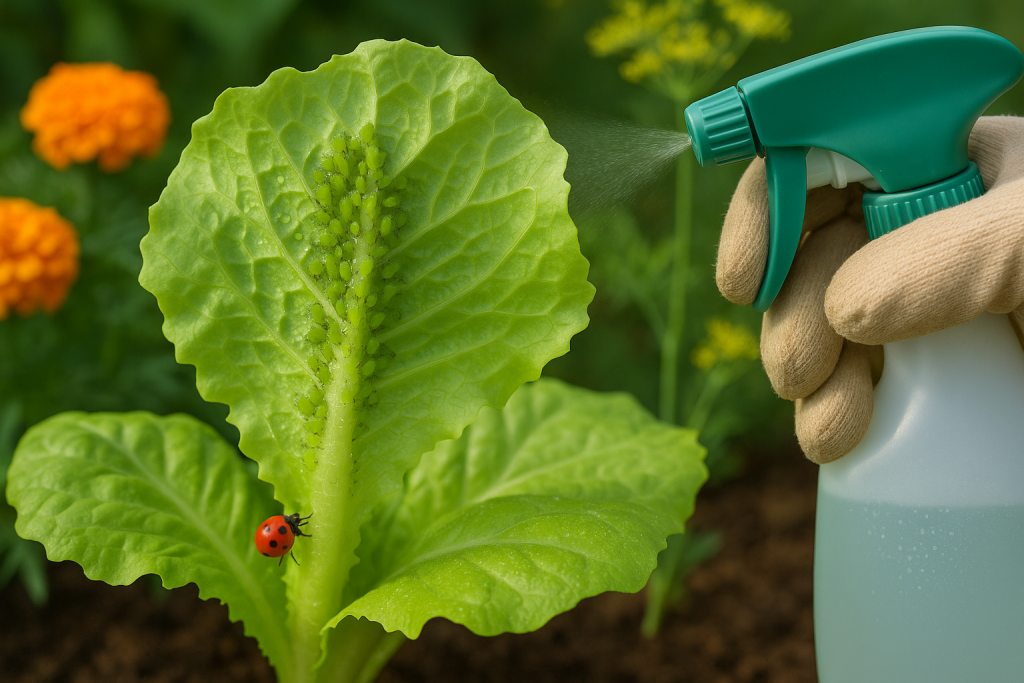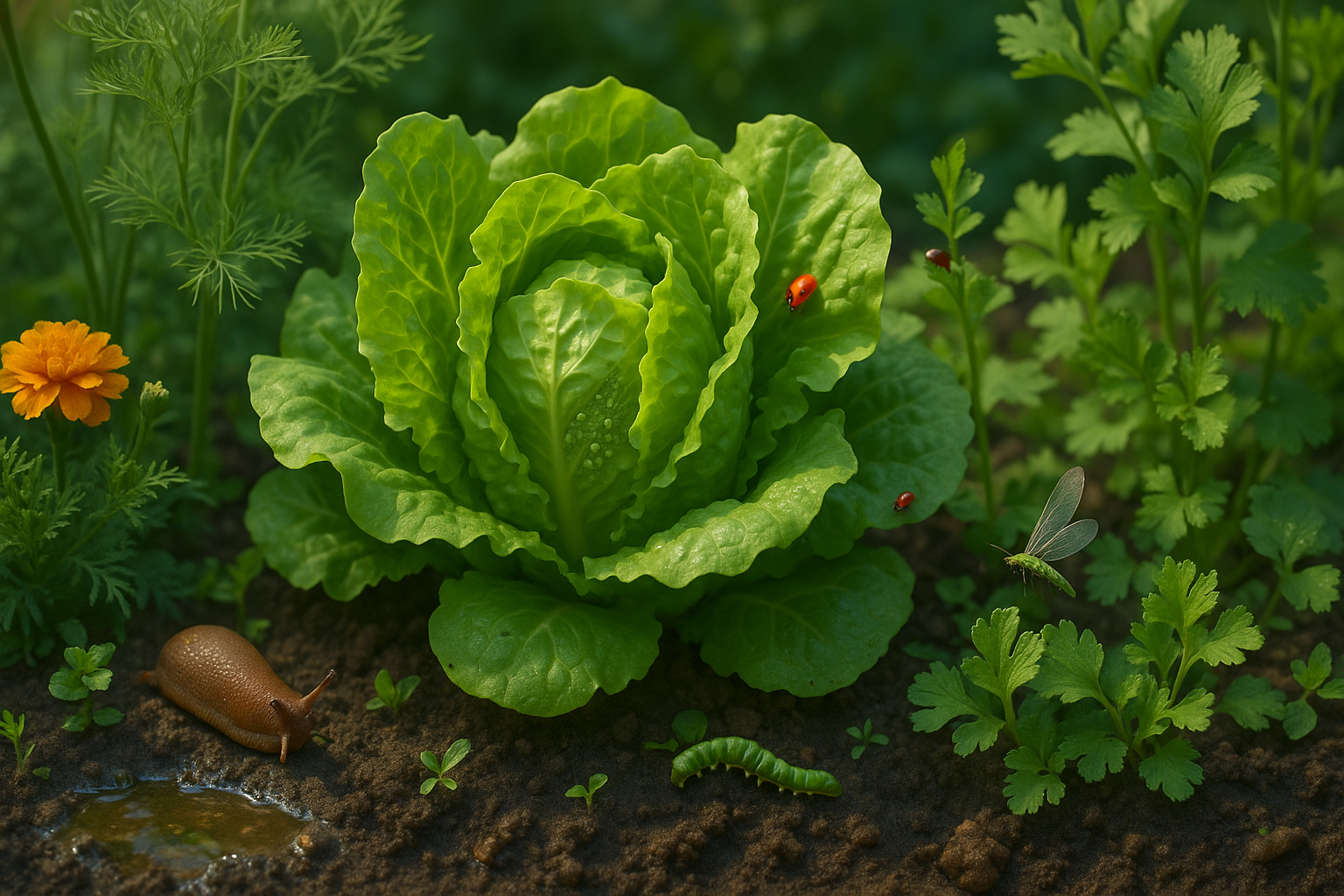Introduction
Lettuce pests are a common frustration for both home gardeners and commercial growers, attracted by the tender leaves and consistent moisture that make lettuce such an appealing crop. Unfortunately, this popularity with insects can quickly turn a thriving patch of greens into a patchy, struggling mess. Protecting your lettuce from these invaders is about more than just preserving your harvest—it’s an essential step to ensure your produce is safe and free from harmful chemicals.
Natural pest control methods not only help keep your garden ecosystem healthy but also deliver cleaner, fresher crops to your table. In this article, we’ll take a closer look at the most common lettuce pests you might encounter—including aphids, slugs, caterpillars, and more—and share practical, effective strategies to manage and prevent them naturally. Whether you’re a seasoned grower or just starting out, you’ll find actionable tips to keep your lettuce flourishing, the healthy way.
Identifying Common Lettuce Pests

Lettuce is a favorite crop in many gardens, but it often attracts a range of pests that can quickly ruin your harvest if not caught early. Some of the most common lettuce enemies include aphids, especially the green peach and potato aphid species.
These tiny insects cluster on the undersides of leaves, and you might notice sticky honeydew or curling lettuce leaves as signs of their feeding. Slugs and snails are also frequent visitors, leaving telltale slime trails and large, ragged holes in leaves—look for them early in the morning or after rain.
Caterpillars such as cutworms and armyworms feed at night and can swiftly chew through stems and leaves, sometimes leaving entire seedlings toppled over. Leaf miners make their presence known by winding, white tunnels that snake through the lettuce leaves as the larvae feed inside. Flea beetles, meanwhile, leave distinctive tiny pinholes across leaf surfaces, looking like someone sprinkled your lettuce with a mini hole punch.
Early identification of these pests is crucial since catching an infestation before it grows allows for effective, natural control options. Regularly inspecting the undersides of leaves, checking for residue, or setting up simple beer traps for slugs can save your lettuce before the problems spiral.
By staying vigilant and learning the specific signs of pest trouble, you arm yourself with the best chance for a healthy, thriving lettuce patch using non-toxic methods.
Aphids

Aphids are tiny, soft-bodied insects that can be green, black, or even white, making them easy to miss at first glance on your lettuce. You might spot them clustered on the undersides of leaves or along tender new growth, and their sticky, sugary waste called honeydew often signals a nearby colony.
If left unchecked, aphids can cause leaves to yellow, curl, or develop stunted growth, impacting both the look and taste of your harvest.
Natural Control Methods
One simple natural control is to blast the aphids off with a strong stream of water from your hose—repeat this every few days to keep numbers down. Inviting beneficial insects like ladybugs and lacewings—both voracious aphid predators—into your garden can tip the balance in your favor. You can buy these insects online or plant flowers that attract them naturally.
Applying a neem oil spray (following label instructions) disrupts aphid feeding and breeding without harming most beneficial creatures.
Prevention Tips
Prevention is key: make it a habit to inspect your lettuce regularly for early signs of aphids, especially on new growth. Quickly remove and dispose of any heavily infested leaves to stop the spread.
For added protection, try companion planting—grow marigolds or aromatic herbs like dill and cilantro near your lettuce plants. These companions repel aphids and attract more natural predators.
Staying proactive with these methods means you can manage aphids effectively, increasing your chances of crisp, pest-free lettuce all season long.
Slugs and Snails

Slugs and snails are some of the most frustrating nighttime garden visitors, often leaving their mark on your prized plants with ragged, irregular holes in leaves and tender stems. If you notice shiny, silvery trails meandering across the soil, pots, or foliage in the morning, that’s a telltale sign these nocturnal nibblers were at work while you slept.
Protecting your garden starts with smart barriers—wrapping pots with copper tape creates a mild electric charge that repels both slugs and snails, while a sprinkle of crushed eggshells or diatomaceous earth creates rough, uncomfortable surfaces they avoid crossing. Beer traps, another tried-and-true method, lure these pests in with the scent of yeast. Simply bury a shallow container so the rim is level with the soil, fill it with beer, and check and refresh it daily.
Beyond direct control, reducing their habitat discourages them from sticking around. Clear away mulch, leaves, and garden debris where they can hide during the day, and water your plants early in the morning so the soil dries out by nightfall—both slugs and snails prefer moist environments.
For those really persistent invasions, picking slugs and snails off by hand in the evening with a flashlight gives your plants instant relief (and is oddly satisfying). By staying alert to signs of damage, setting up physical barriers, and making your garden less inviting, you can keep these determined, damp-loving pests from putting holes in more than just your leafy greens.
Caterpillars and Other Chewing Insects
Chewing insects like caterpillars, cutworms, armyworms, and loopers can quickly decimate tender seedlings and young plants—which is why early detection is so important for gardeners. Cutworms often attack plants at the soil line overnight, severing stems, while armyworms and loopers chew through leaves in distinctive ragged patterns.
One practical way to keep populations down is to check your plants daily, especially at dawn or dusk when these pests are most active. Look for holes, droppings, or the pests themselves crawling on leaves and stems. If infestations are light, simply pick caterpillars and other chewers off by hand and drop them into a bucket of soapy water.
For extra protection, consider using row covers to physically block insects from reaching your crops—these are especially effective for seedlings and vulnerable young plants. If pests are persistent or widespread, organic sprays containing Bacillus thuringiensis (Bt) offer targeted control without harming beneficial insects; Bt causes caterpillars to stop feeding within hours. Apply according to label directions and reapply after rain for best results.
Combining these techniques with regular monitoring—walking through your garden at least every couple of days—will help you catch problems early and keep your crops healthy. Remember, catching chewing insects before they multiply is the best way to prevent big losses and avoid the need for stronger chemical controls later in the season.
Preventing and Managing Lettuce Pests Naturally
Integrated Pest Management (IPM) is an effective, eco-friendly approach to protecting your lettuce from pests without using harsh chemicals. Start with smart planning: companion planting is a simple first step. Pair your lettuce with pest-repelling neighbors like onions, garlic, or marigolds to deter common invaders such as aphids and slugs.
Next, rotate your crops each season so lettuce isn’t planted in the same soil year after year. This practice disrupts pest life cycles and minimizes recurring infestations. Prioritize soil health by adding compost, using organic fertilizers, and avoiding overwatering—healthy lettuce plants are more resilient against bugs and disease.
Encourage beneficial insects like ladybugs, lacewings, and parasitic wasps by providing diverse flowering plants nearby. Additionally, create small water sources to attract birds and frogs that feast on pests. Regularly walk your lettuce beds to scout for early signs of trouble; many pests can be removed by hand before problems escalate.
Use mulch or physical barriers such as row covers to block crawling insects, and always clean up dead leaves or spent plants to reduce hiding spots for pests.
Key Practices to Remember:
- Plant helpful companions
- Rotate crops yearly
- Build living soil with compost
- Invite natural predators
- Check plants often
- Mulch around lettuce
- Use protective covers
- Clear garden debris regularly
These integrated methods work together to make your lettuce crop naturally healthier and less inviting to pests, all while fostering a thriving organic garden ecosystem.
Conclusion
Staying alert to pest issues in your lettuce garden starts with regular checks and learning to spot common invaders early. Quick action, like removing pests by hand or using barriers, makes a big difference. Natural controls—such as companion planting, neem oil, or introducing beneficial insects—are great options that avoid harsh chemicals altogether.
Not only do these methods promote healthier lettuce, but they also protect pollinators and keep the soil alive, boosting your garden’s entire ecosystem. By staying vigilant and being willing to try new natural approaches, you’ll discover what works best for your setup.
With a little experimentation and care, you can enjoy thriving, chemical-free lettuce while supporting a greener, more sustainable backyard.
